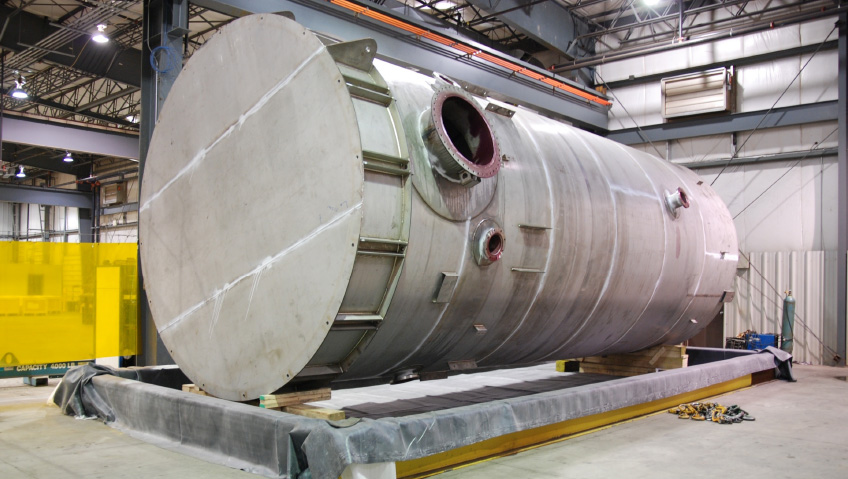The only full-time, professionally staffed economic development organization dedicated to promoting talent and capital investment in Chippewa County, Wisconsin, the Chippewa Economic Development Corporation (CEDC) attracts companies to the county and helps area businesses expand, and the organization creates initiatives that boost the Chippewa Valley’s economy.
Linking companies and communities within the Chippewa area with resources for economic development, CEDC also provides site selectors, businesses, developers, entrepreneurs, and talent with the information they need in their search for exceptional growth prospects and opportunities. To stimulate the region’s economy by providing a solid economic climate that attracts and retains people, companies, and new investments, CEDC is committed to supporting and facilitating economic development and further enhancing the county’s outstanding overall quality of life.
Infrastructure and opportunity
“Some of the things we’re tasked with are to help existing businesses expand and recruit new investment,” says Charlie Walker, President and CEO. “We’ve been helping entrepreneurs start up for quite a long time. One of the initiatives we use is our BEAR program. This Business Expansion And Retention program helps solidify our economic base of manufacturing and agriculture by helping them improve their supply chains and reduce input costs. Because we’re situated in a great place within the Midwest, many local companies take advantage of our interstate access to major markets. As for rail, we have top tier service from both the Union Pacific and the CN Railroads, which give us a great opportunity to promote the region with some added agricultural value, transload abilities, and intermodal access.”
He adds that Casey Hedrington, Economic Development Specialist, has also been leading the effort to establish the Chippewa County region as a BDOZone (Bioeconomy Development Opportunity).
“We were fortunate last year where we applied for a full business development grant through the USDA, and were awarded funds to help establish another economic development tool for the region,” explains Hedrington. “We hired Ecostrat, a company out of Canada that helped CEDC establish Wisconsin’s first BDOZone. They looked at aspects of biomass available in our area, they certified our ‘regional readiness’ for bio-manufacturing, helped us position the region for global connections, and marketed Chippewa County to the growing influx of clean energy opportunities.”
Hedrington worked hand-in-hand with Ecostrat to set up a committee of local farmers and businesses within a 75-mile radius to assist in the project. This resulted in looking at corn stover—stalks, leaves, and corn cobs left in fields after harvest. “Our thought was that we can use it for more value-added products such as bioplastics,” he says. “That’s one of the biggest things in our area.”
Ecostrat, after much analysis, issued a BDOZone Rating for Chippewa County. Ecostrat essentially gives a rating, like a credit rating, with Triple A being the best. Chippewa received an A due to various factors. “We have good infrastructure not only for trucking, but our location is not far from international airports, along with rail access,” Hedrington says. “Charlie also saw an opportunity for something to be done using pre-existing rail and pre-existing infrastructure, and since it’s just off the highway, it’s great for trucking and it’s already zoned industrial.”
This A rating sends a clear and powerful signal to bio-based developers and investors worldwide that the Chippewa County area is “bio-manufacturing ready.” These ratings enable CEDC to credibly signal and promote key local bio-manufacturing “success characteristics to bio-based developers and investors around the world. ‘AAA’, ‘AA’, ‘A’ and ‘BBB’ ratings put an internationally recognized, credible “bullseye” on the best areas to build and operate new bio-based manufacturing plants. They help attract new bio-based manufacturing plants to the places where they are most likely to succeed by reducing input volume risks.
“In the end, it’s just a neat way to reduce cost and reduce the risk of a bioproduct,” adds Walker. “We’ve already done the analysis, so we know that because we looked at a variety of factors, including the volume of corn stover and access to markets with rail, the highway, and labor. Add to that Chippewa County has two certified State of Wisconsin industrial parks; we have the product for the next project-inputs, infrastructure, talented workers, and properly zoned land… we are well positioned for growth.”
Bridging the divide
According to Hedrington, these factors play a crucial role in Chippewa’s ability to connect agriculture with manufacturing. He explains that this approach provides an opportunity to benefit the local community in other ways, leveraging its strong rating to establish a manufacturing rotation plant. This setup enables efficient collection of products, transportation by rail or truck, and timely delivery to their destinations.
“We’re hoping that would bridge the gap between agriculture and BDO and food manufacturing. Chippewa County’s rich agriculture has been vital for food production and influences food trends. Chippewa County continues to embrace ‘farm-to-fork’ practices, sourcing locally for better taste and lower environmental impact,” Hedrington says. “Chippewa County food manufacturers are leaders in sustainability via optimizing water use, reducing waste, and using green energy, positioning them to be leaders in eco-friendly food production. CEDC works to leverage traditional farming with modern technology, which helps ensure a sustainable future for food manufacturing in the area. Chippewa County’s food manufacturing growth continues and the BDO economy has the potential to open additional opportunities. It’s an option for each one to help the other. Bringing more manufacturing to the area brings jobs and a better economy. Business brings business!”
Fueling growth sustainably
Reliable electricity is essential for any local business or industry. It powers agriculture and manufacturing machinery, tools, and computers, making operations smooth and efficient. Chippewa County is well served when it comes to power. The region has Xcel Energy, which is known nationwide, along with a variety of Electric Co-Ops; Baron Electric Cooperative, Chippewa Valley Electric Cooperative, Clark Electric Cooperative, Dunn Energy Cooperative, and Eau Claire Energy Cooperative are all supporters of CEDC and its economic development efforts. Power is a big concern to be factored in in any sector, and particularly in agriculture.
“Our relationships with Xcel Energy and the Co-Ops are great. They work hard to help our business parks throughout the Chippewa region and are prepared for new business expansions and opportunities,” says Walker. “We’re proactive about that to make sure that that power product is available for these agriculture businesses that can take advantage of the BDOZone.”
Putting down roots
When it comes to the various programs and incentives CEDC has in place to help businesses, the Wisconsin Economic Development Corporation’s two certified industrial parks are among the most significant. “We also do land buy downs, tax increment financing, and industrial development bonds,” Walker explains. “We’re in an opportunity zone, and then the BDOZone on top of that allows a company to get better financing on their bonds if they’re going to do major projects. And with current higher interest rates, that’s always attractive.”
As for challenges, Chippewa has faced issues similar to those of many communities, says Walker, including wanting to encourage the youth workforce to remain in the Chippewa Valley.
“We have what’s called a farm work ethic,” he says. “One of the things that rural communities face is trying to keep the labor of the young folks on the farm. With the Ag industry, more people are leaving and aren’t going into farming. Without farming, you can’t have these types of projects.”
To help remedy that, CEDC works closely with its farms and promotes the importance of Ag. For the last two years, the organization has been working to host Farm Technology Days, the largest farm show in Cadott, Wisconsin, centered on promoting the advantages of automation and technology on the farm and encouraging youth and the next generation of farmers to stay on the farm.
“That’s a threat that all rural communities are having,” Walker says. “Farmers are having a difficult time finding that next generation of farmers. So we put in some strategies to help, helping our community college and our universities in the region, all working to help the Ag industry and keep that talent pipeline going.”
It’s an issue found across all industries and one that must be addressed early to educate students about the variety of possibilities available to them for potential future careers.
“We started organizing STEAM Night and career fairs in the middle schools and working with the local school districts, because the sooner our future talent starts understanding what’s available to them as they go through high school, the better,” says Walker. “Students are more aware of the local job possibilities. For the last three years, we’ve had a great network for that, and Wisconsin and our local high schools have one of the best state high school intern programs in the country. We’ve got some great internship programs at the high school level, and then, of course, the college level with Chippewa Valley Technical College.”
Wisconsin’s University system is “one of the best in the country,” he adds, and part of that ties into Ag and the BDOZone approach. Another advantage of the Chippewa BDOZone is that there is the UW Stout, UW River Falls, and UW Eau Claire all within 40 miles of the zone.
“We have area universities within close proximity of the Chippewa BDOZone,” he adds, “so that’s one of the assets it looked at—our talent pipeline—during the risk assessment period and found the community has implemented programs to reduce the problem of future worker availability. Starting career exposure earlier is a huge key to keeping kids interested in manufacturing and trades, because a lot of them just don’t know the opportunities and advantages that are out there.”
Looking ahead, looking abroad
CEDC envisions success in its attraction of foreign direct investment (FDI) with its BDOZone targeted at those companies that need a bio-agriculture footprint in the United States. “FDI is a huge opportunity for Chippewa,” Walker says. “We have companies from Japan, Britian, and Germany that invest in local manufacturing. A lot of folks don’t know that within the BDOZone is diverse agriculture. Milk and grain crops contribute significantly to the agricultural sales profile of the zone. Forage production of alfalfa, hay, and corn silage provides a solid feed base for the dairy and cattle industry. The area ranks high in goat and poultry production. Specialty crops such as maple syrup, Christmas trees, fruits, and vegetables also play a vital economic role. The top five agricultural export markets are Canada, Mexico, China, Japan, and Korea, representing 66 percent of total exports from the state. Mexico is up over 3 percent. Germany (No. 6) is up nearly 27 percent and Australia (No. 7) is up 36 percent. Wisconsin exported to 135 countries in the second quarter of 2024 and Chippewa County wants to become a bigger player in the export arena.
“We have our target on foreign direct investment—which is what Casey’s really been working on, getting the word out—and that’s why we’re excited to highlight our competitive advantages.” Notes Walker, “There have been over 170 FDI projects announced in Wisconsin from 2014 to 2024 that span diverse business sectors such as industrial equipment, real estate, and food and beverage processing. Wisconsin has a strong history of FDI, with top sources including Switzerland, Germany, Canada, the United Kingdom, and Japan, and CEDC is working to bring more FDI to the Chippewa Valley and the Chippewa BDOZone will certainly help that effort.
All in all, he says, the area is simply a smart place to invest. “The BDOZone incorporates an opportunity zone and a tax increment finance district, and you have the certified shovel-ready parks, you have the railroads, you have access to the markets. It’s just a great place to look for Ag expansion.”






